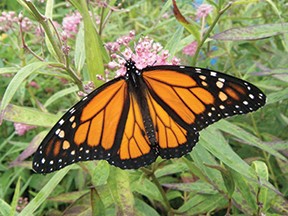



Could you live in a world without flowers, coffee or fruit? Thanks to pollinators, we're able to enjoy these. Without them, we would be missing out on a lot of our favorite things -- including food.
For more than a decade, the pollinator population has continued to decline due to destruction of habitats, disease and pesticide use. Recent studies show many pollinator species are at risk for extinction.
Invaluable to our ecosystems, pollinators are vital to agriculture production and support plant biodiversity. With pollinators being responsible for roughly 1/3 of our food supply, it's essential that we help save them.
How can you help pollinators?
- Create a pollinator garden with native plants
The best choice for pollinators are native plants. Non-native plants may not provide enough nectar or pollen or may be inedible to butterflies or moths and their caterpillars. - Offer host plants for growing caterpillars
Many field guides to butterflies and moths will indicate the host plants for various species. With a little bit of research, you can learn what plants attract egg-laying butterflies and moths. - Design with large groupings of plants
Bees tend to visit one kind of flower at a time. By growing large groupings of one kind of plant, rather than scattered through the garden, the bees can achieve better foraging efficiency. - Offer a diversity of species
Choose a variety of plants with abundant pollen and nectar and varying bloom time throughout the season and choose plants that are hosts for butterfly and moth caterpillars, such as milkweed for monarch butterflies. For bees, try planting lavender, bee balm, purple coneflower and blazing star. - Provide shelter and nesting areas
A small pile of branches and sticks will offer shelter for butterflies and moths. Leaf-cutter and Mason bees will look for hollow twigs or sticks to lay their eggs and rotten logs encourage wood-boring beetles. Just like us, they need water too. Provide a small birdbath near the garden or nesting areas for them. - Eliminate or reduce use of chemicals and pesticides
- And most of all…
Watch and enjoy the fascinating diversity and beauty of pollinators!
